International Exhibition CMEF & ICMD 2018 Spring in Shanghai (Part 2)

This is the second part of an article devoted to my visit to the spring CMEF & ICMD medical equipment and accessories exhibition in Shanghai in 2018. It will talk about this type of clinical diagnostic devices like biochemical analyzers. On the example of devices presented at the exhibition, the types, principles of operation and features of various biochemical analyzers will be described.
Part 1. Overview of the exhibition
Little biochemistry
If you take blood from a vein, then it can be done, including, for the biochemical analysis of blood. This method of laboratory diagnosis provides information about the metabolism in the cells, which, in turn, determines the quality of the internal organs and the body as a whole. The fact is that living cells contain a large number of well-known chemical compounds such as proteins, carbohydrates, lipids. Cell metabolism depends on the number and ratio of these substances. Some of them are important biochemical indicators (I am sure that many have heard such words as glucose, cholesterol, total protein, triglycerides, etc.) and have a range of normal concentrations. The output of the concentration of a substance from the range leads to impaired metabolism. The approximate norm for glucose is 3.33–5.55 mmol / liter. The lack of glucose leads to energy starvation of cells and a decrease in the functional capabilities of the body. An excess increases the risk of the occurrence of well-known diabetes.
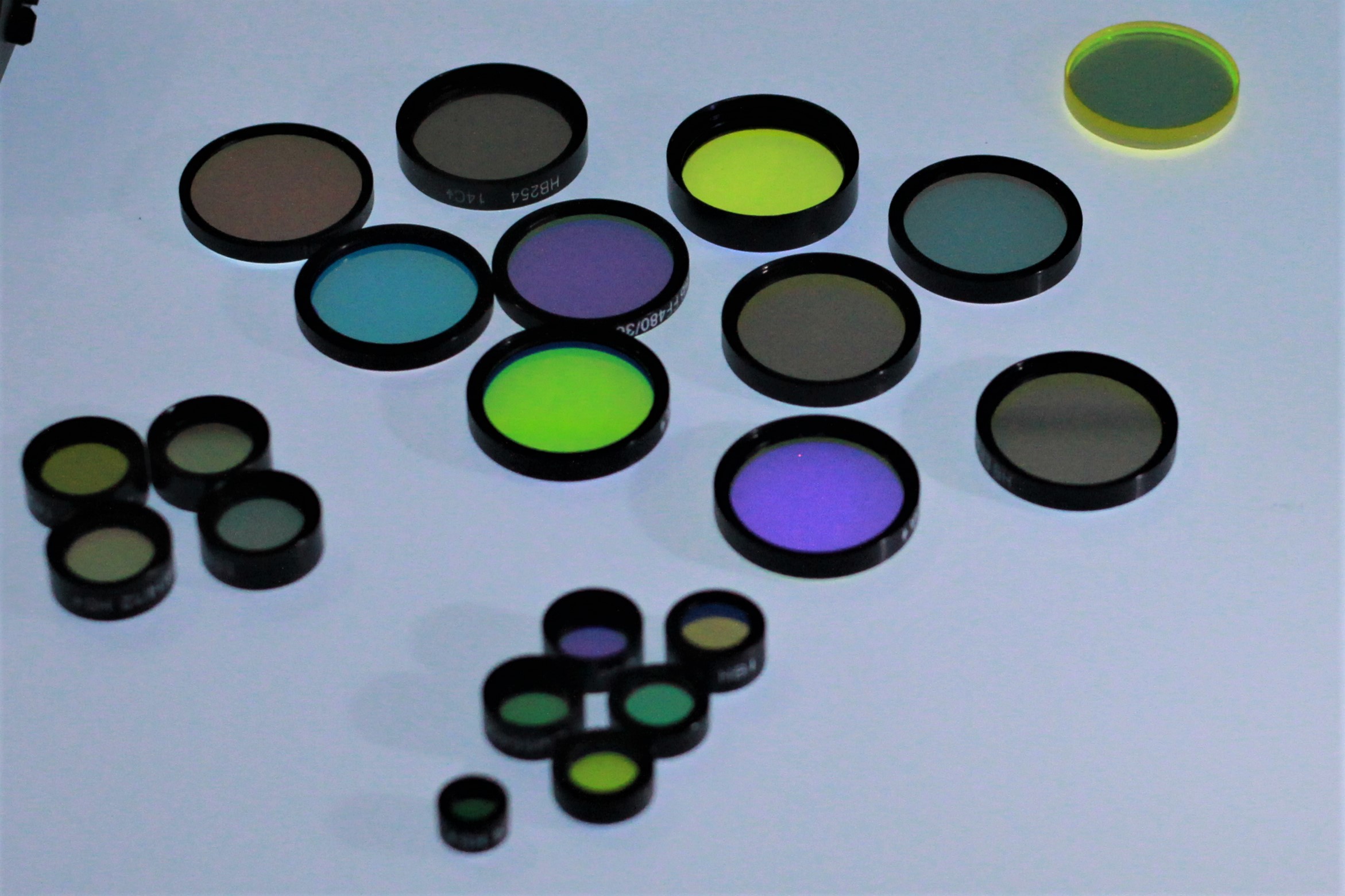
One of the options for the selection of the wavelength is the use of band-
pass optical filters. We now turn to how you can determine the concentration of a particular substance. To do this, the sample (for example, blood) is mixed with a special reagent. A sequence of chemical reactions produces a substance that absorbs light at certain wavelengths. By measuring this absorption, you can find out the concentration of the original substance. The optical measurement result is the calculated optical density. For example, consider glucose again. If it is mixed with a special reagent, you can get the substance NADH, which absorbs light at a wavelength of 340 nm. The more glucose was initially, the more NADH will result from the reaction, and the greater will be the absorption.
In fact, the previous paragraph briefly describes the principle of the test using a biochemical analyzer:
- Mixing Reagent and Sample
- Biochemical reaction
- Optical density measurement
- Calculating the concentration of the test substance
I also note that the very first measurement method was visual. Color and intensity were determined by eye and compared with a table of colors for known concentrations. A glucose reaction solution, for example, is colored pink. The higher the glucose concentration, the darker the color of the solution. But the accuracy of measurements by this method, of course, is quite low. Then they began to use photometers to determine the intensity at a specific wavelength. Ultimately, biochemical analyzers were created for medical laboratories.
Semiautomatic devices and automatic machines
We turn directly to the instruments. There are two groups of biochemical analyzers - semi-automatic and automatic. The devices of the first group, in fact, are photometers that allow to carry out measurements according to certain programs and to make an automatic calculation of concentrations. However, the reactions themselves (i.e. mixing the reagents and samples) are carried out by humans. Such devices are quite cheap and are used in clinics and laboratories in which
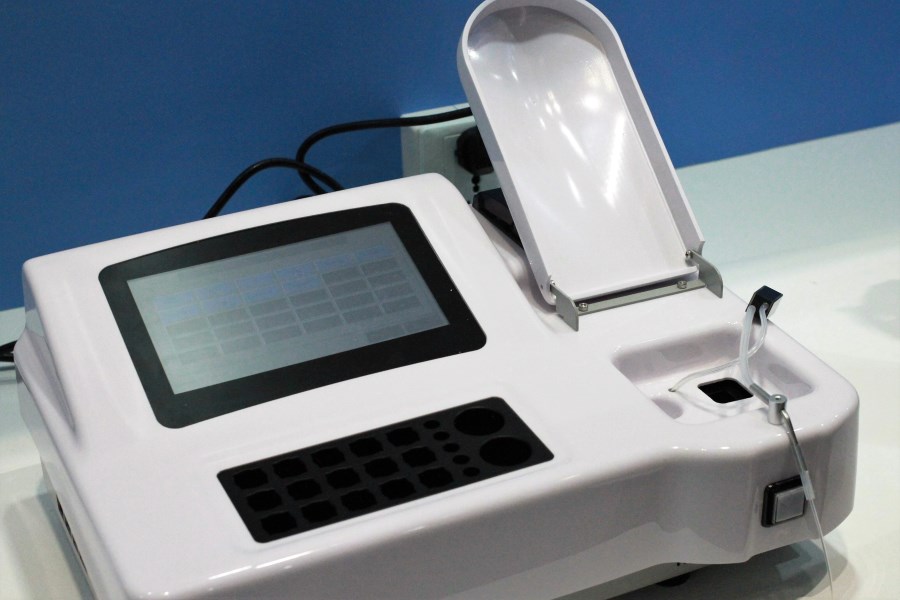
Semi-automatic biochemical analyzer ES-105 company Bioelab. A typical representative of the group of semi-automatic. Compact and cheap. Recently, there has been a tendency to partially replace such devices with low-performance automatic analyzers, since they came pretty close in cost.
In automatic analyzers, the process of biochemical analysis is fully automated. The device independently mixes reagents and samples, conducts measurements and calculations. It is only necessary to specify which tests to conduct and install the samples and reagents. Automatic analyzers are more expensive than semi-automatic, however, they have higher speed and accuracy of measurements. It is about automatic analyzers that further narration will be conducted.
Performance
Automatic analyzers, in turn, are also divided into categories according to the main parameter for this type of instrument - performance.
Biochemical test takes time. From one to a couple of tens of minutes. If we conduct tests consistently, it will be very long. Therefore, the devices are designed to conduct tests in series-parallel. There are many ditches in which reagents and samples are added. Addition occurs sequentially,
but since the reaction itself can go for tens of minutes, we can assume that the reactions in parallel cuvettes go in parallel. The time between adding a reagent, for example, to two adjacent cells, is called the cycle time of the device (a more detailed description of the cycle will be given later). The shorter the cycle, the better the performance of the analyzer. Typical performance of the absolute majority of devices 200-2000 tests / hour.
Devices of low productivity can be desktop and compact enough. According to Chinese manufacturers, such analyzers are especially popular in poor regions (Africa, South America, Southeast Asia), where the cost issue is acute, but at the same time semi-automatic analyzers are no longer suitable. The compactness of the devices allows their use in mobile laboratories. At the exhibition, several companies presented their new analyzers at 200 tests / hour. Now these devices are gaining popularity, including in Russia.
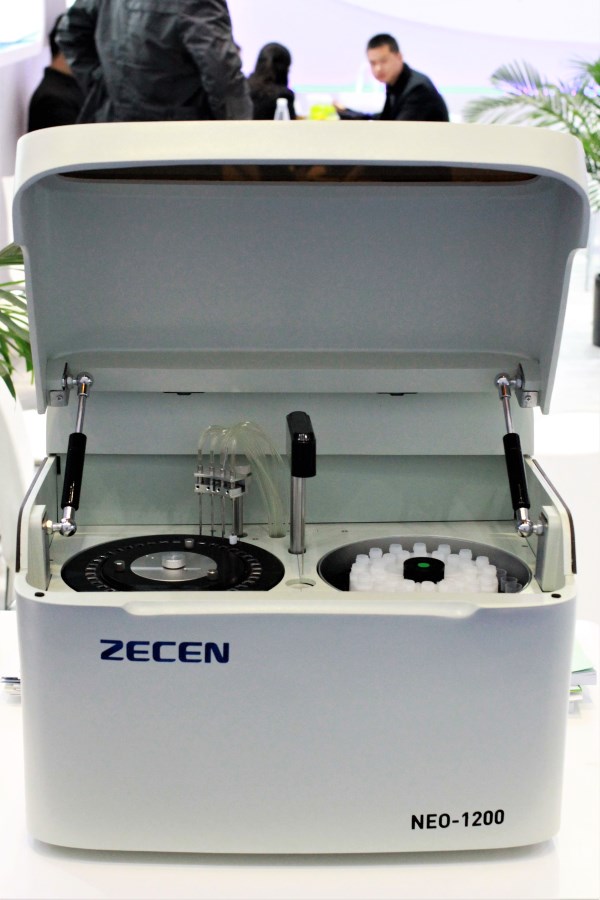
Zeccen's NEO-1200 automatic analyzer at 120 tests / hour. One of the lowest performing and compact machines
Devices of average productivity (300 - 800 tests / hour) make the most mass group. Available in most clinics and laboratories. The price of such devices is higher, but in addition to greater performance, the amount of reagents and samples loaded is much higher. Unlike the previous group, they can contain built-in water purification stations, compartments for urgent samples, conduct tests with two reagents.
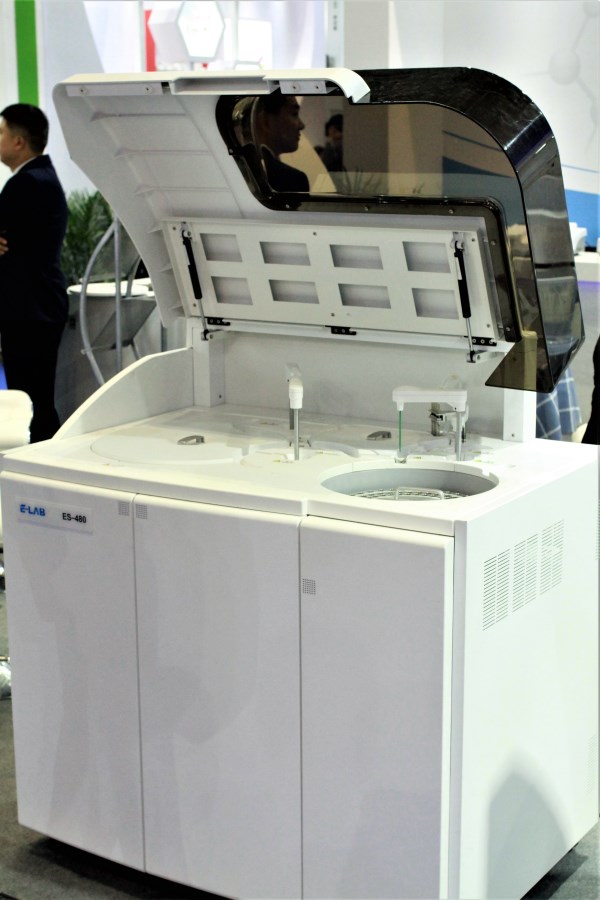
Bioelab's ES-480 automatic analyzer with a capacity of 400 tests / hour. It can carry on board 90 reagent bottles and 120 test tubes with samples.
High-performance devices (> 800 tests / hour) are equipped with large hospitals. These are quite expensive analyzers that allow measurements at high speeds. Very often, test tubes with samples in such devices are not located in the drum, but are fed through a special tracking system (you can add new samples at any time). Along with several reagent drums, such devices can provide many hours of continuous testing.
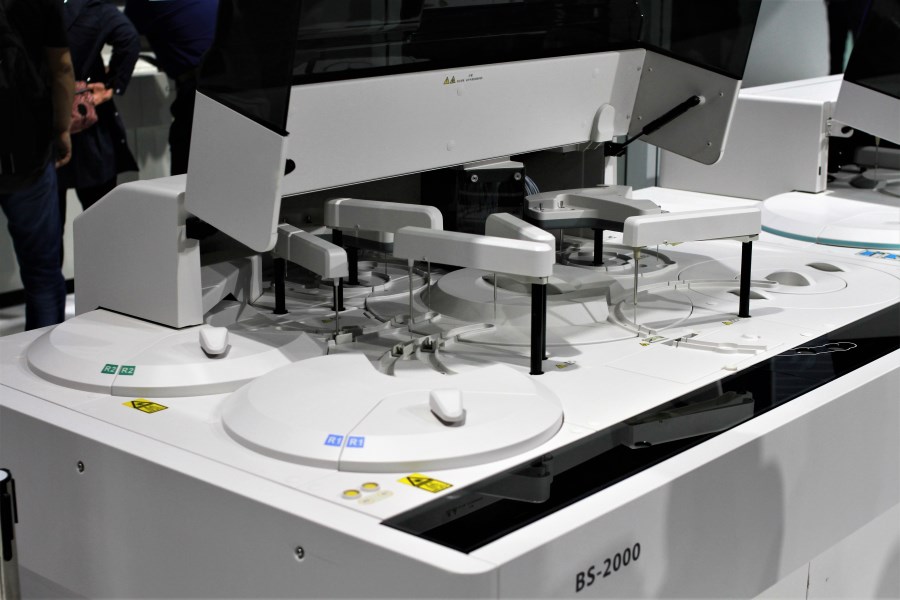
Mindray BS-2000 analyzer with a capacity of 2000 tests / hour. On the left side there are two drums with reagents. At the front of the device track system of sampling.
The upper limit of the performance of a single instrument is 2200 tests / hour, however, if the analyzer has a track sample feeding system, then it is often possible to combine several instruments into one line, increasing the overall performance multiple of the number of analyzers in a line. It often happens that not only biochemical analyzers are added to the line, but also, for example, ELISA and chemiluminescent analyzers.
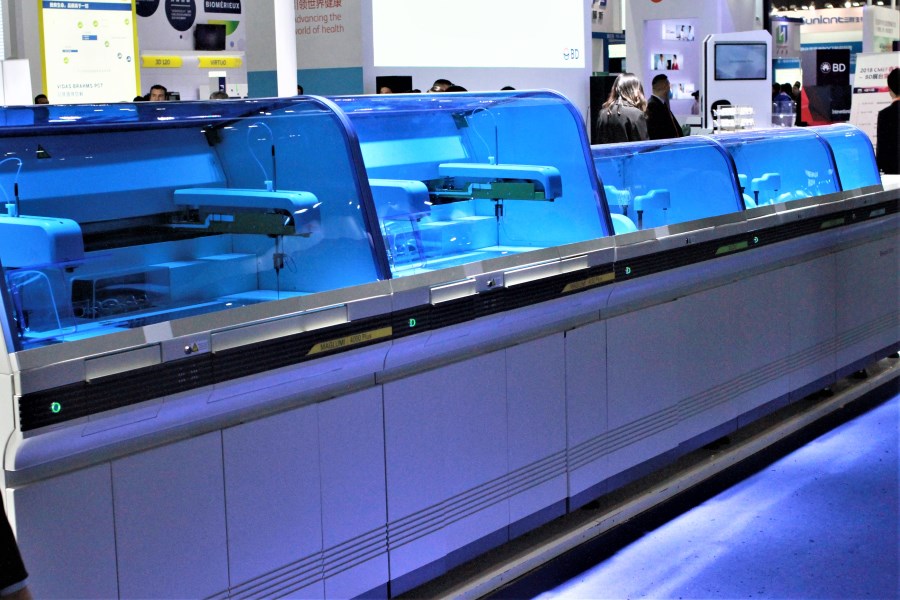
The modular Biolumi 8000 system from Snibe, containing (from left to right) two immunoanalyzers, two biochemical analyzers, an electrolyte analyzer and a sample supply module.
Principle of operation
Biochemical analysis of samples begins with the preparatory stage. Measured samples are placed into the sample drum (or into the cassettes in the case of a track system). These are usually 5-10 ml tubes with blood, plasma, or urine. Further, depending on what biochemical tests need to be carried out, vials with appropriate reagents are placed into the reagent drum. The operator (usually the laboratory assistant) sets the positions of the samples and reagents, their parameters, and assigns the necessary tests to each sample.
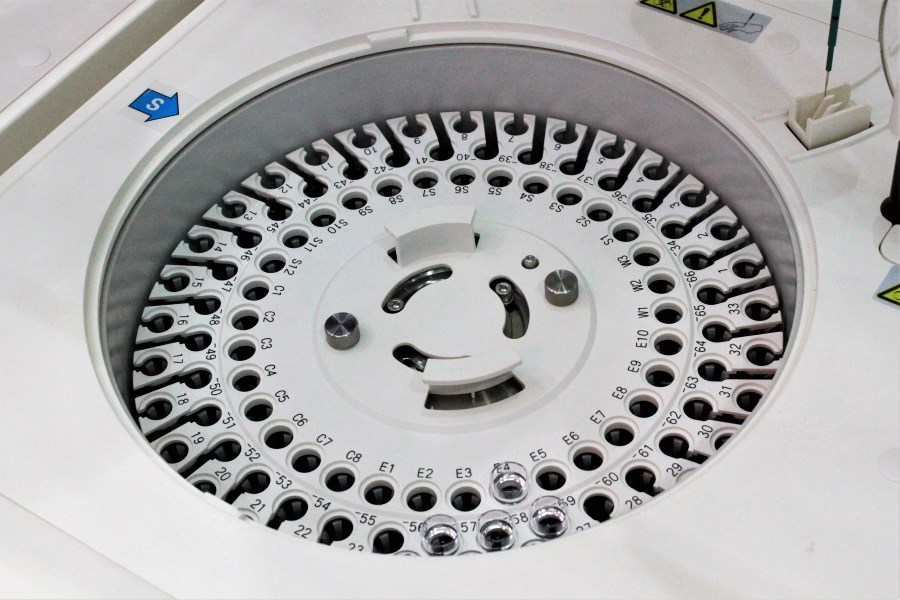
Drum sample instrument URIT-8280 company URIT. This drum design allows you to read a bar code from test tubes, a scanner built into the device. This allows you to automatically enter into the device information about the sample and the necessary tests. The maximum load of such a drum is 99 tubes.
It should be noted separately that the drums with reagents are necessarily cooled to a temperature corresponding to the temperature in ordinary household refrigerators. This is necessary for the safety of reagents, since most of them are stored at 4-6 degrees. The device can work all day, and the reagent bottle can last for weeks and months. Samples are easier, because they are usually not stored, so special cooling is not required for them.

Baran with reagents of the same URIT-8280. The total load of 80 bottles, and for different rows of bottle sizes vary.
After loading the necessary reagents and samples, initialization of the device is started. This stage includes testing the performance of various systems, setting the initial states, heating the drum with cuvettes (biochemical reactions take place at 37 degrees, as in a living organism). Also, depending on the device, this may include washing the reaction cuvette, measuring the initial levels of reagents and samples, preparatory optical measurements, in short, various procedures necessary for conducting biochemical tests.

Tecom TC 9082 drum cuvette. This device uses single cuvettes, although in some devices there may be whole cast segments. Made of plastic or quartz glass.
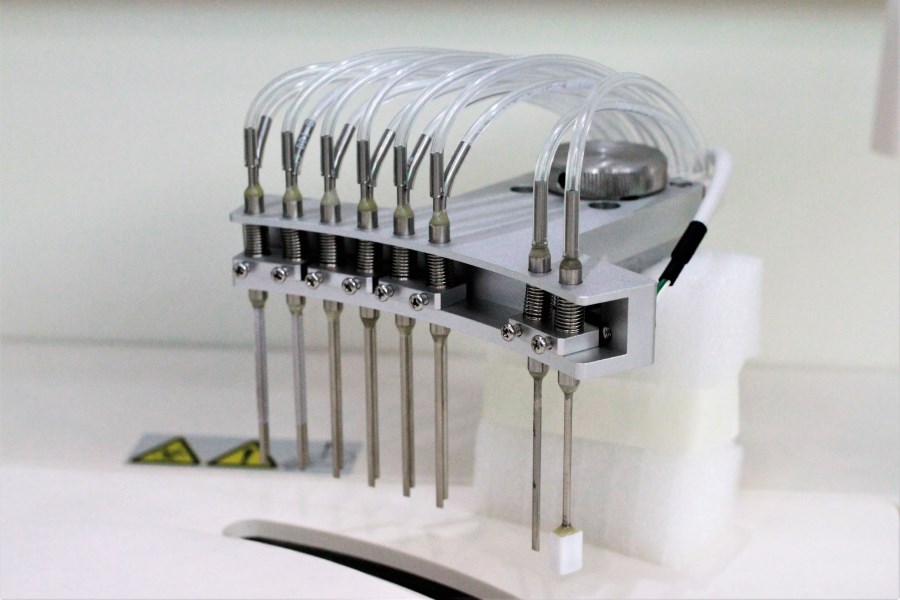
The washing station of the device URIT 8300. The needles consist of two tubes - one liquid is removed from the cuvette, the other is added to the cuvette by water or a washing solution. After washing the cuvette can be reused.
After starting the device, the sequential addition of reagents and samples to the reaction cells occurs. Adding involved special dispensers. If the cuvettes are reusable, then they are washed with a special washing station. After the reagent and the sample have been added to the cuvette, the mixture is agitated with a special mixer, although sometimes this operation can be carried out with a dosing needle. Stirring is necessary to obtain a homogeneous solution. You can again recall the reaction to glucose. If you do not mix the solution after adding the sample, then the reaction will take place only at the bottom of the cuvette, and we will see a beautiful gradient going from saturated red at the bottom of the cuvette to transparent at the top. It is beautiful, but, alas, unreliable for measurements.
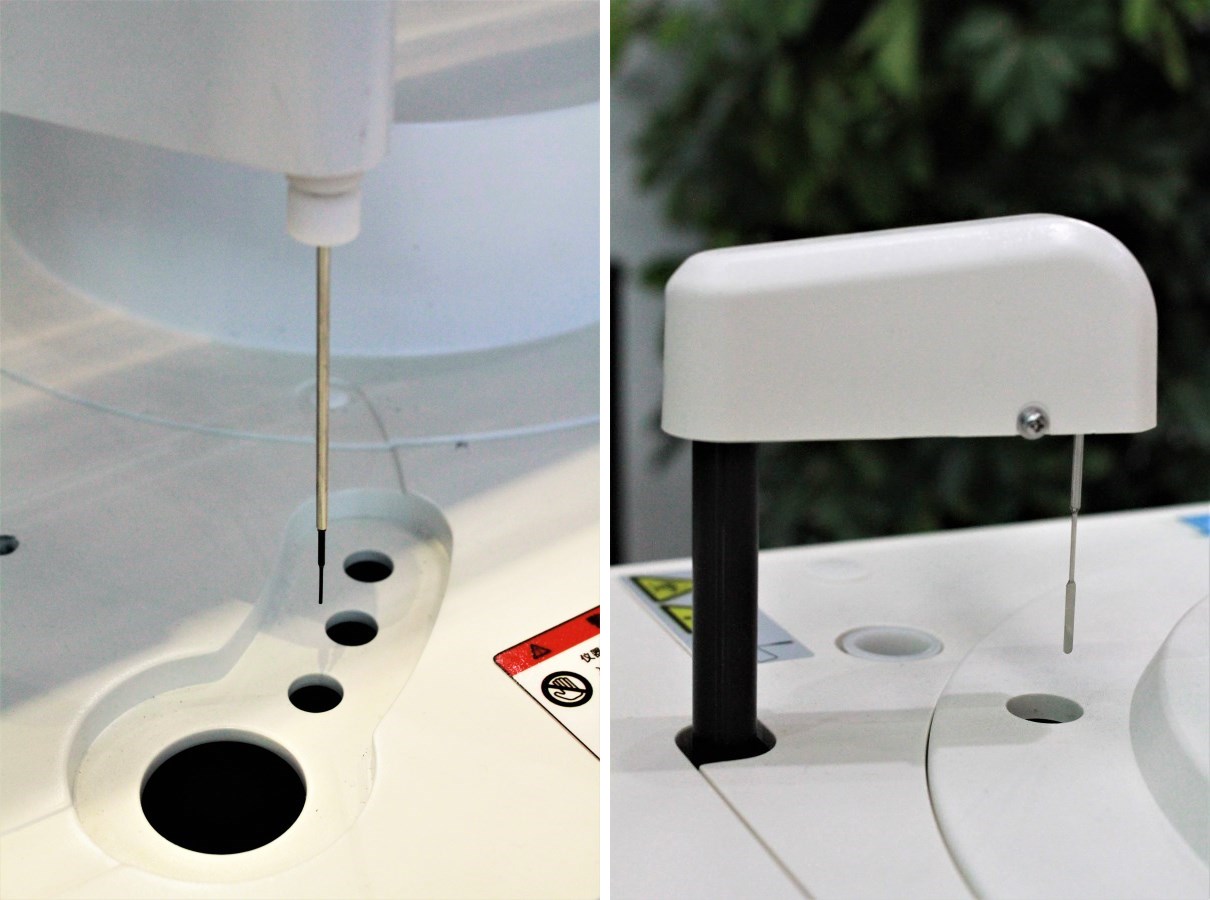
Left: Sunmed UP 5000 sample dosing needle. The needle takes the sample, adds it to the cuvette, then rinses with deionized water.
Right: the mixer of the URIT 8300. After mixing the solution in the cuvette, the mixer is also washed with water
. The optical systems of devices are quite diverse, but all of them, in one way or another, consist of two parts - the radiator and the receiver. The emitter forms a parallel beam of light. The receiver measures the intensity of light transmitted through a cell at specific wavelengths. The range of lengths is quite large — all visible light and near UV, but out of the whole range, usually only 10-14 specific wavelengths are needed.
During the biochemical reaction, a series of measurements is carried out, on the basis of which the concentration of the measured substances is determined.
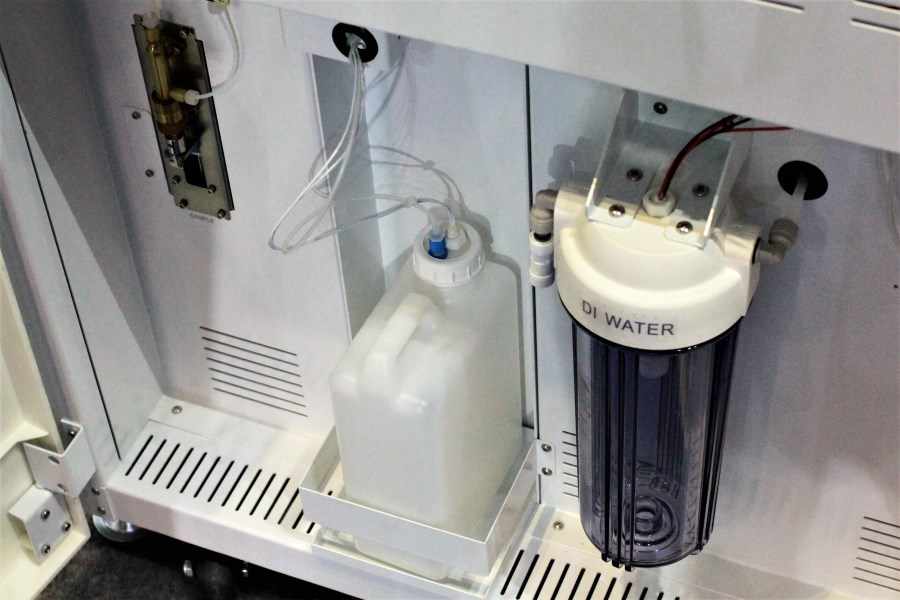
Left: syringe pump for dispensers.
Center: tank or with detergent solution (necessary for rinsing the cuvette) or waste.
Right: intermediate tank with clean water. To flush the ditch and needles you need not just pure, but deionized water.
In fact, that's all. After the last measurement, the instrument is terminated. There are, of course, special functions for quality control, calibration, linearity control, but they are variations of the above.
One has only to say that the device is controlled by a desktop program on an external computer. It contains all the algorithms and modes of operation of the device, the reaction to certain events, the user interface. Each manufacturer for each device writes its own software, so the quality often suffers. A lot of bugs, crashes, about literate UX in general, few people have heard. Well, technical support is a separate song. Corrections of serious errors can be expected for six months. But laboratory technicians are unpretentious people - they get used to it.
Finally
The diversity of the biochemical analyzer market is quite large. Only at the exhibition CMEF 2018 dozens of manufacturers and hundreds of devices were presented. Some companies deal exclusively with biochemical analyzers, others also produce reagents, and some market giants have a wide range of products from various fields of medicine. Although conceptually analyzers twenty years ago are not very different from modern ones, many technical solutions are being improved, which improves the quality of devices and reduces their cost. Now also, devices are much more accessible than a couple of decades ago. According to the forecasts of Persistence Market Research from 2017, the global market for biochemical analyzers by 2024 will grow by almost 50% in dollar terms.
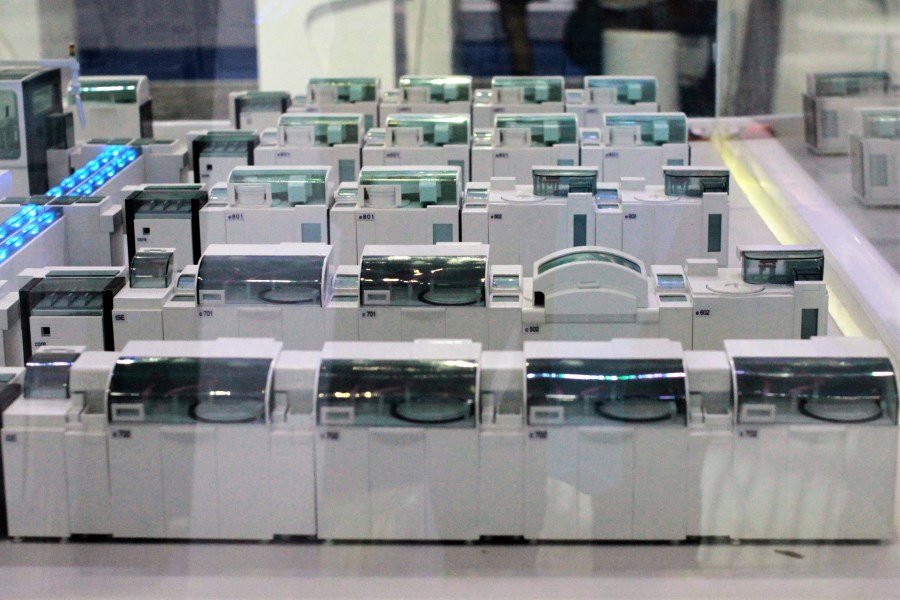
Approximately, some manufacturers see the equipment of large laboratories
If we talk about Russia, not only large clinics are equipped with various biochemical analyzers, but also small laboratories in small towns. The vast majority of such devices are Chinese. Alas, there are practically no biochemical analyzers produced in Russia, therefore we are only consumers in this segment. On the wave of import substitution, analyzers of the Russian assembly began to appear, but we are not talking about high-grade production yet. But the situation with reagents for biochemical analysis is better - there are several Russian manufacturers of reagents. Hopefully, over time, Russian modern biochemical analyzers will appear.

